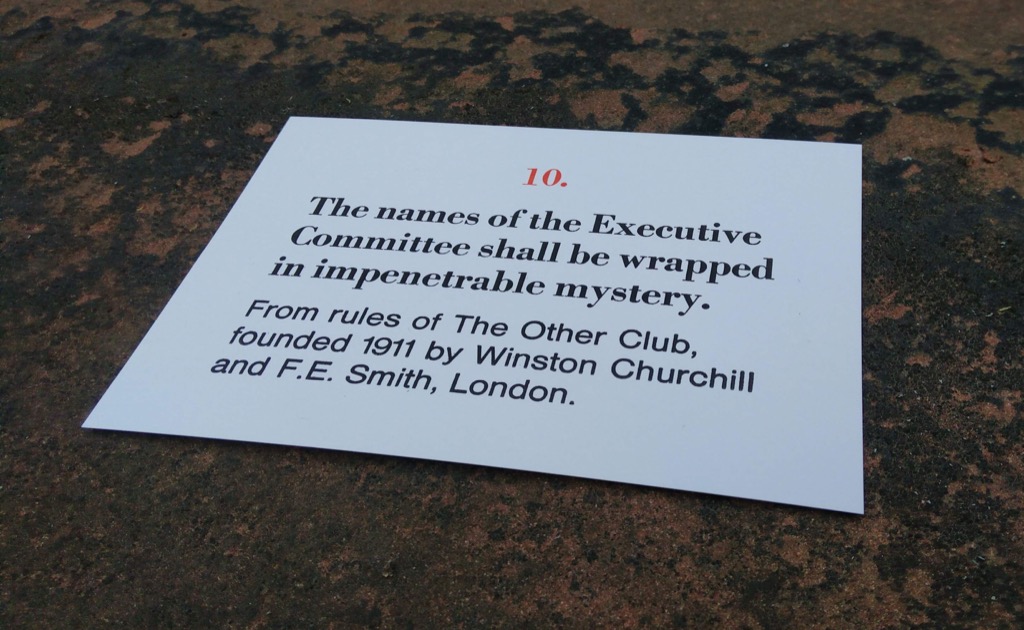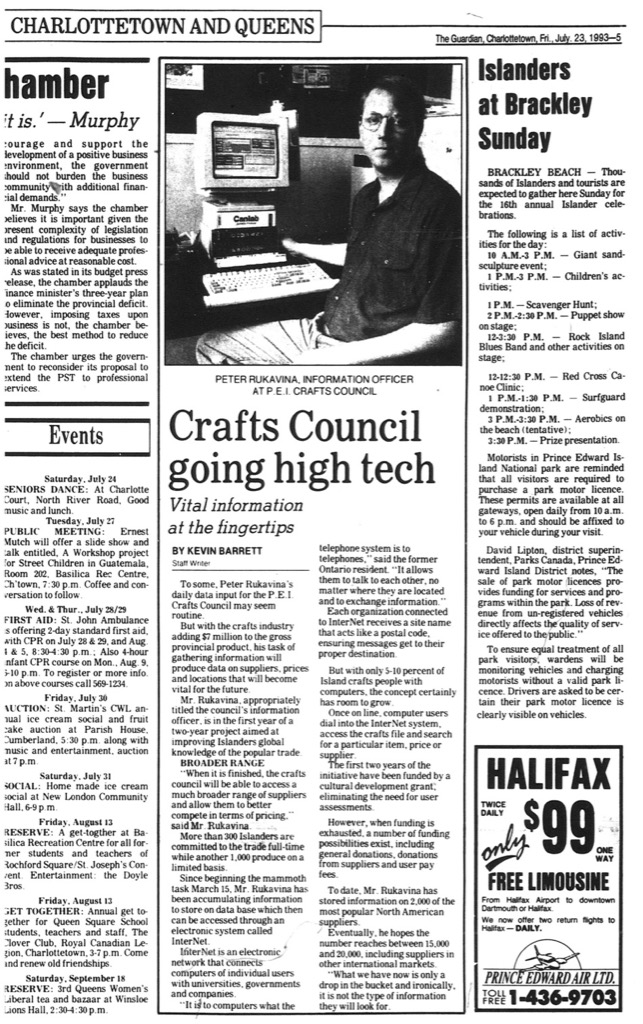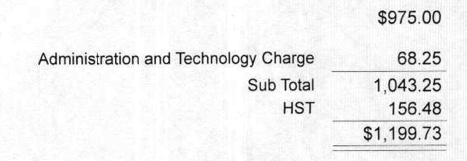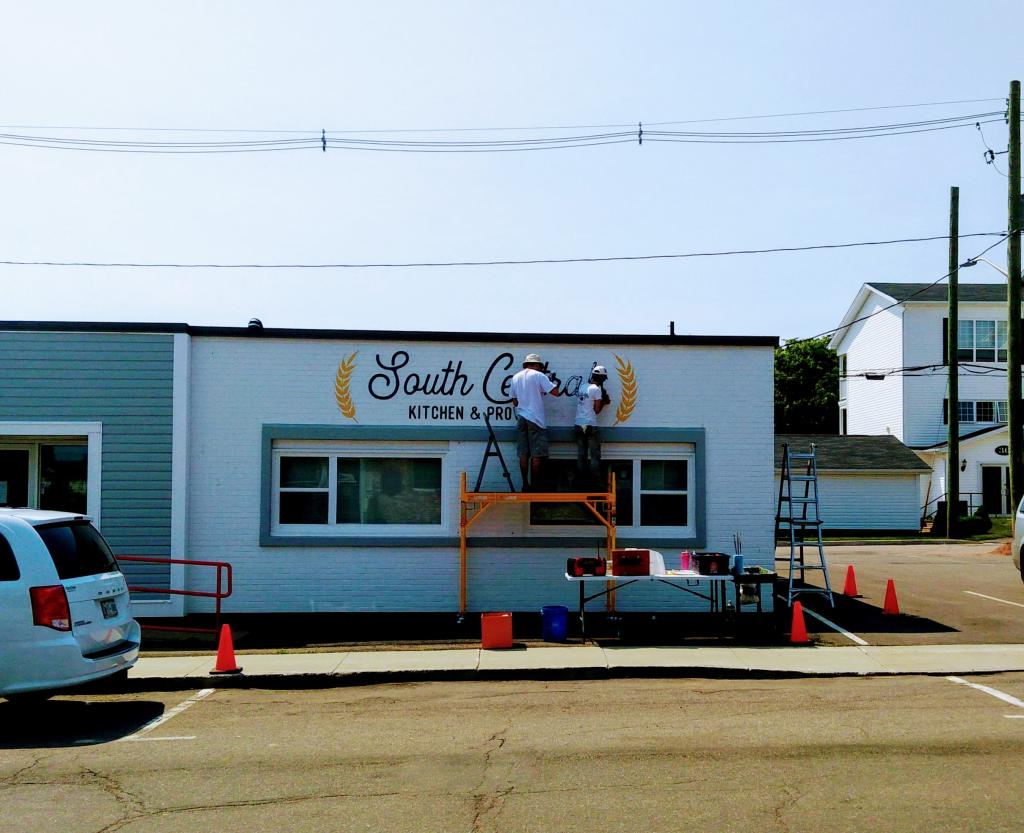A recent visit to the Internet Archive unearthed a cache of text and audio related to a summer series I presented in 1996 on CBC Prince Edward Island’s Island Morning that we called Consumed by Technology.
The episodes were part of a website hosted by erstwhile Internet service provider Island Services Network, the first toe in the waters of the Internet by CBC on the Island. This meant that, by virtue of having constructed the CBC’s site in the first place, I had uncommon freedom to post and document the Consumed by Technology series in a way that I wouldn’t have been able to previously or later: I linked to each episode’s RealAudio file, provided a list of links (what we’ve come to call, in the podcasting world, “show notes”), and the transcript of the episode (the text I provided to the hosts).
Like A User’s Guide to the Future that I presented the summer before on Island Morning, Consumed by Technology provides a small window into the beginnings of the digital age on Prince Edward Island; what’s remarkable to me is that the issues I chose to highlight back then, more than 20 years ago, are still the issues I spend a lot of time thinking and talking about today.
Like the previous summer’s series, Consumed by Technology was produced by Ann Thurlow for the CBC.
Here are the seven episodes, in order of broadcast:
The Other Club was founded in London in 1911 by Winston Churchill and F.E. Smith, reportedly after Churchill and Smith were passed over for membership in The Club.
Twelve rules were drafted for the renegade club, the most interesting of which is Rule № 10:
The names of the Executive Committee shall be wrapped in impenetrable mystery.
I’ve memorialized the rule in this letterpress print which, should you be so-inclined, you can buy a copy of from my Etsy shop.

I received an invitation to attend a “stakeholders tour” of the Province House restoration this afternoon; I hold no office that entitles me to such an invitation, other than that of being a significantly-interested neighbour, so I count myself lucky.
There were two groups through the site today, one at 1:00 p.m. and the second at 3:00 p.m., and a lunch appointment required I attend the second; this turned out to be a fortuitous happenstance, as a quintet of Island-history-steeped–Linda Berko, Jim Macnutt, Ed Macdonald, Reg Porter and David Keenlyside–were in attendance. It was like visiting a record store with the Beatles. Suffice to say, many, many, many questions were asked and answered, and when the tour guides didn’t have an answer at hand, one of the quintet was generally able to jump in.
I took a lot of photos–my favourite is the one below, of the basement–but none of the capture the essence of being inside the place accurately. I have spent a lot of time in Province House over the last 25 years: in the public gallery, in meetings, and doing computer support. I know the building well. And to encounter it in such an undressed state was bracing; it was truly like encountering a close relative’s skeletal remains.
Fortunately, everything we learned points to a careful, informed restoration process underway, led by capable people. I hold out hope that when Prince Edward Island turns 150 in 2023 we will be able to celebrate it with a newly-dressed Province House at the heart.

My friend Simon, engaging in some admirable proactive librarianship, passed along a clipping from the July 23, 1993 edition of The Guardian with a story headlined “Crafts Council going high tech,” concerning the post I’d started 5 months previous to harvest data about crafts supply sources for Island crafts producers.
I’m pictured in my tiny cubicle in the back of the Crafts Council’s shop on 156 Richmond Street, sitting in front of the IBM PS/2 that I used to do my work.
That computer was running Windows 3.1 at the time; within a year I’d installed Slackware Linux, and it became the server that powered Prince Edward Island’s first website. As far as I know, this is the only photo ever taken of that machine.

I challenge you to tear yourself away from this captivating holding forth by Stephen Fry at Oxford once you start watching it.
Among the things you will learn is the backstory to Oscar Wilde’s visit to Charlottetown.
Fry speaks for 45 minutes without stopping for air. And those are just his introductory remarks before being interviewed.
In the 2018 Prince Edward Island white pages—yes, the white pages still exist—you won’t find a listing for our house, or Catherine’s studio, or my office: we long ago made our numbers virtual ones that redirect to our mobile phones.
But you will find a listing for Reinvented Labs.
With a number that hasn’t worked for years.
I have no idea why.

On Friday afternoon I returned to the roof of the Holman Grand hotel to so some additional LoRaWAN gateway testing, and, as it was an absolutely stellar day, I took the opportunity to take a photo of Province House in its current exoskeleton-wrapped state.

My what a green and red island we live on.
Google Photos took the opportunity to take the photo and stitch it to some neighbouring ones to make a panorama:

This documentary presented by Stephen Fry about the Gutenberg printing press will teach you everything you need to know about modern printing.
I’ve been migrating my corporate bookkeeping over to AccountEdge (the final chapter of a saga that started 12 years ago).
One of the nice features of AccountEdge is that it automatically reverse-calculates the HST on purchases I enter. So, for example, if I enter a purchase of $115.00 and indicate it was HST-taxable, AccountEdge will automatically assign $15.00 of the amount to the “HST Paid” account.
I was entering an invoice from my accountant into AccountEdge this week, a bill for $1043.25 plus HST:

I entered the total amount, $1199.73, and AccountEdge calculated the HST amount as $156.49, which was a penny more than the invoice indicated.
Doing the math:
1043.25 x 0.15 = 156.4875
The guidance from Canada Revenue Agency on rounding GST/HST amounts is this:
Round off the GST/HST to the nearest cent:
- If the amount is less than half a cent, you may round down.
- If the amount is equal to or more than half a cent, round up.
If your customer is buying more than one item and tax applies at the same rate on all items, you can total the prices of all taxable supplies of property and services, calculate the GST/HST payable, and then round off the amount.
Taking the 156.4875 and rounding thus, I get $156.49, as the 0.75 cents is equal to or more than half a cent.
Apparently the accounting software my accountant uses rounds differently, and thus I’m billed $156.48.
This is a bug, and likely one that nobody other than I will ever notice or worry about. But it bothers me.

 I am
I am